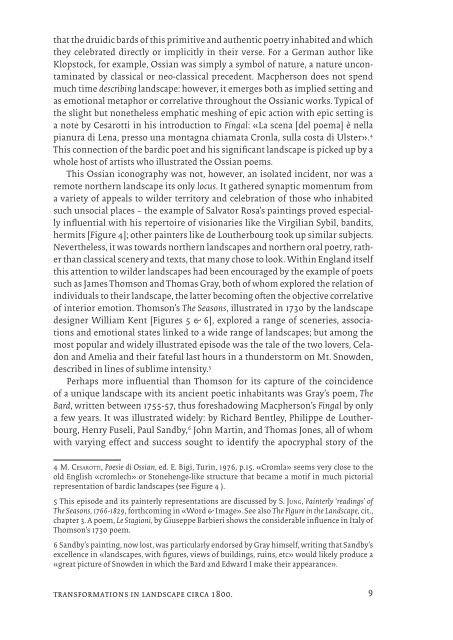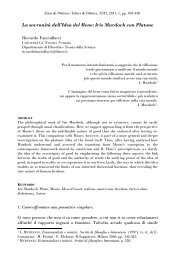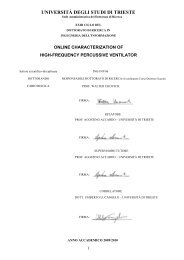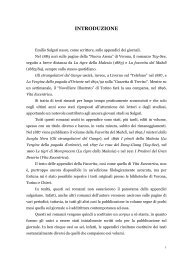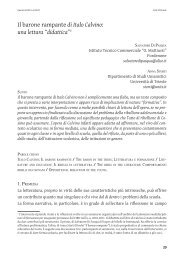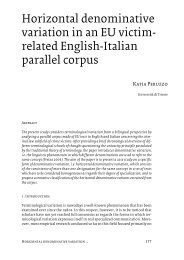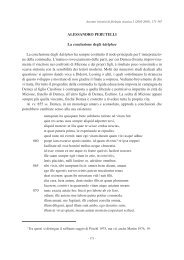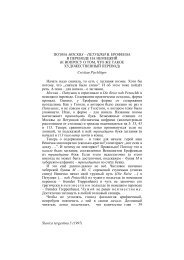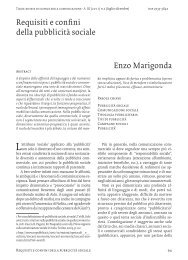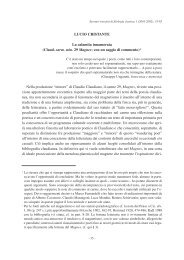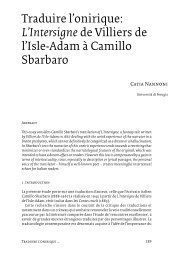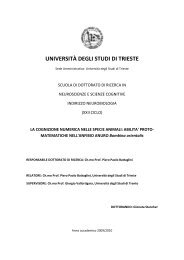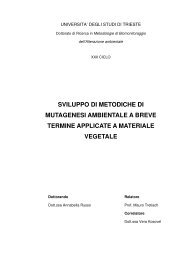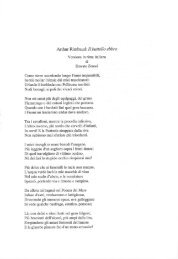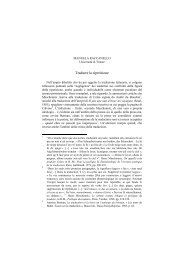Melchiorre Cesarotti e le trasformazioni del paesaggio ... - OpenstarTs
Melchiorre Cesarotti e le trasformazioni del paesaggio ... - OpenstarTs
Melchiorre Cesarotti e le trasformazioni del paesaggio ... - OpenstarTs
You also want an ePaper? Increase the reach of your titles
YUMPU automatically turns print PDFs into web optimized ePapers that Google loves.
that the druidic bards of this primitive and authentic poetry inhabited and which<br />
they ce<strong>le</strong>brated directly or implicitly in their verse. For a German author like<br />
Klopstock, for examp<strong>le</strong>, Ossian was simply a symbol of nature, a nature uncontaminated<br />
by classical or neo-classical precedent. Macpherson does not spend<br />
much time describing landscape: however, it emerges both as implied setting and<br />
as emotional metaphor or correlative throughout the Ossianic works. Typical of<br />
the slight but nonethe<strong>le</strong>ss emphatic meshing of epic action with epic setting is<br />
a note by <strong>Cesarotti</strong> in his introduction to Fingal: «La scena [<strong>del</strong> poema] è nella<br />
pianura di Lena, presso una montagna chiamata Cronla, sulla costa di Ulster». 4<br />
This connection of the bardic poet and his significant landscape is picked up by a<br />
who<strong>le</strong> host of artists who illustrated the Ossian poems.<br />
This Ossian iconography was not, however, an isolated incident, nor was a<br />
remote northern landscape its only locus. It gathered synaptic momentum from<br />
a variety of appeals to wilder territory and ce<strong>le</strong>bration of those who inhabited<br />
such unsocial places – the examp<strong>le</strong> of Salvator Rosa’s paintings proved especially<br />
influential with his repertoire of visionaries like the Virgilian Sybil, bandits,<br />
hermits [Figure 4]; other painters like de Loutherbourg took up similar subjects.<br />
Neverthe<strong>le</strong>ss, it was towards northern landscapes and northern oral poetry, rather<br />
than classical scenery and texts, that many chose to look. Within England itself<br />
this attention to wilder landscapes had been encouraged by the examp<strong>le</strong> of poets<br />
such as James Thomson and Thomas Gray, both of whom explored the relation of<br />
individuals to their landscape, the latter becoming often the objective correlative<br />
of interior emotion. Thomson’s The Seasons, illustrated in 1730 by the landscape<br />
designer William Kent [Figures 5 & 6], explored a range of sceneries, associations<br />
and emotional states linked to a wide range of landscapes; but among the<br />
most popular and wi<strong>del</strong>y illustrated episode was the ta<strong>le</strong> of the two lovers, Celadon<br />
and Amelia and their fateful last hours in a thunderstorm on Mt. Snowden,<br />
described in lines of sublime intensity. 5<br />
Perhaps more influential than Thomson for its capture of the coincidence<br />
of a unique landscape with its ancient poetic inhabitants was Gray’s poem, The<br />
Bard, written between 1755-57, thus foreshadowing Macpherson’s Fingal by only<br />
a few years. It was illustrated wi<strong>del</strong>y: by Richard Bent<strong>le</strong>y, Philippe de Loutherbourg,<br />
Henry Fuseli, Paul Sandby, 6 John Martin, and Thomas Jones, all of whom<br />
with varying effect and success sought to identify the apocryphal story of the<br />
4 M. <strong>Cesarotti</strong>, Poesie di Ossian, ed. E. Bigi, Turin, 1976, p.15. «Cromla» seems very close to the<br />
old English «crom<strong>le</strong>ch» or Stonehenge-like structure that became a motif in much pictorial<br />
representation of bardic landscapes (see Figure 4 ).<br />
5 This episode and its painterly representations are discussed by S. Jung, Painterly ‘readings’ of<br />
The Seasons, 1766-1829, forthcoming in «Word & Image». See also The Figure in the Landscape, cit.,<br />
chapter 3. A poem, Le Stagioni, by Giuseppe Barbieri shows the considerab<strong>le</strong> influence in Italy of<br />
Thomson’s 1730 poem.<br />
6 Sandby’s painting, now lost, was particularly endorsed by Gray himself, writing that Sandby’s<br />
excel<strong>le</strong>nce in «landscapes, with figures, views of buildings, ruins, etc» would likely produce a<br />
«great picture of Snowden in which the Bard and Edward I make their appearance».<br />
transformations in landscape circa 1800.<br />
9


